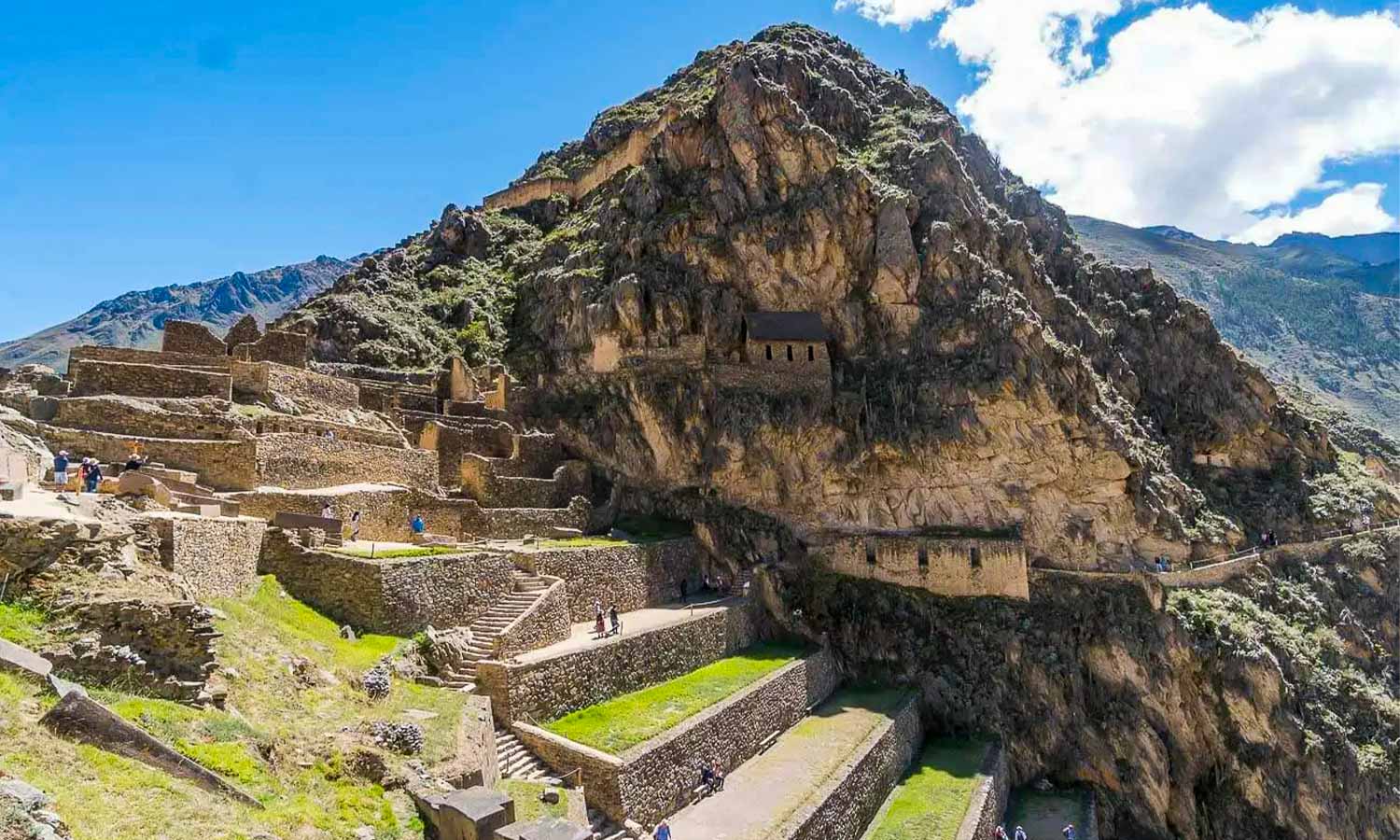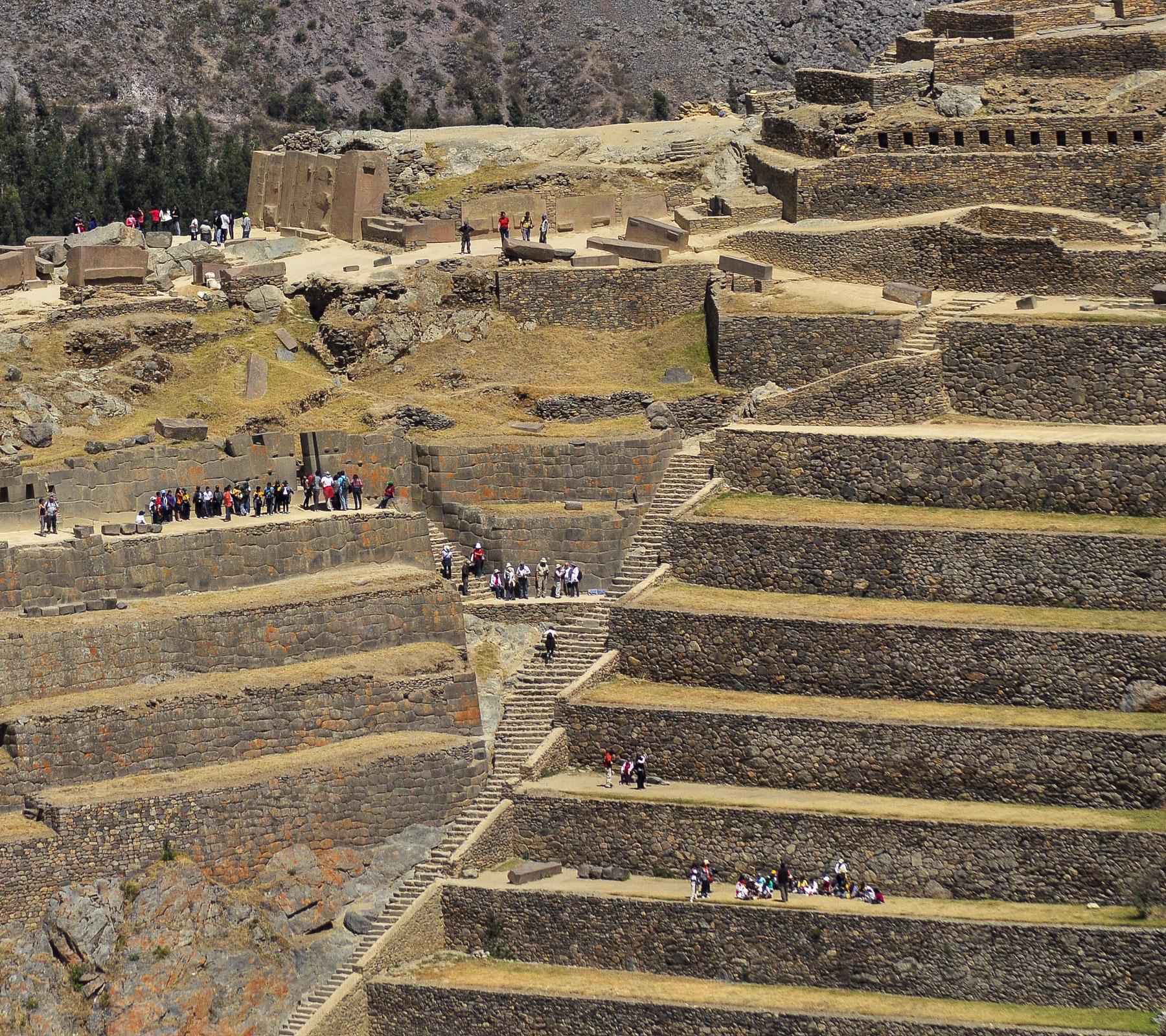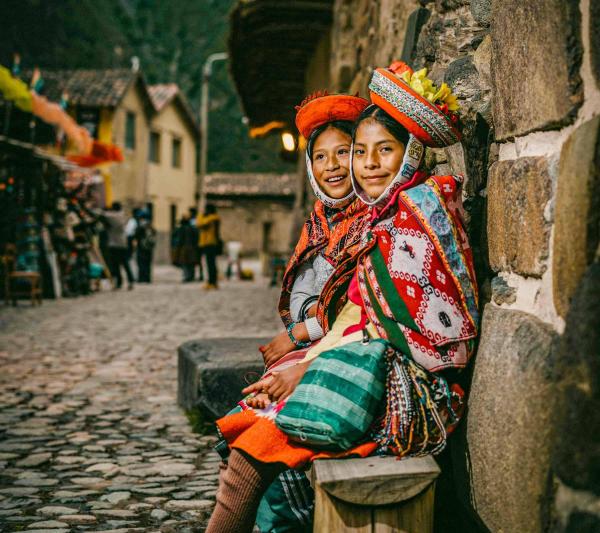Ollantaytambo
Ollantaytambo is a historic town and archaeological site located in the Sacred Valley of the Incas, about 60 kilometers northwest of Cusco Peru. It is one of the best-preserved examples of Inca architecture and urban planning, offering a unique glimpse into the past.
Ollantaytambo, often referred to as "Ollanta" for short, is pronounced "oy-yahn-tie-tahm-bo." The town's name is derived from Ollantay, a legendary Inca general who played a significant role in expanding the Inca Empire, known as Tawantinsuyo, during the reign of Emperor Pachacutec. Under Ollantay's leadership, the empire's borders extended north to Colombia and south to Argentina.
According to the legend, Ollantay fell in love with the emperor's daughter and sought her hand in marriage. However, Pachacutec denied his request because Ollantay, despite his accomplishments, was not of royal blood. This led the general to rebel against the emperor, an act that ultimately resulted in his imprisonment. While Ollantay's love story ended tragically, your experience in this enchanting town will be anything but.
As you explore the ancient stone streets and houses, you'll be captivated by the breathtaking mountain landscapes and the rich, verdant terrain of the Sacred Valley. The ruins of Ollantaytambo are among the most impressive in the region, offering a glimpse into the architectural prowess and cultural heritage of the Incas.
Known as the "Living Inca City," Ollantaytambo is unique in that its residents still uphold many of the ancient traditions and customs that have been passed down through generations. This connection to the past makes Ollantaytambo a place where history truly comes alive.
History of Ollantaytambo:
Pre-Inca and Inca Era:
Ollantaytambo's history dates back to pre-Inca times, when the region was inhabited by various indigenous groups. However, it gained prominence during the Inca Empire, particularly under the rule of Emperor Pachacuti in the 15th century. Pachacuti is credited with expanding the Inca Empire and transforming Ollantaytambo into a royal estate. He ordered the construction of the town and its impressive agricultural terraces, which were designed to maximize the use of the mountainous terrain for farming.
The town was strategically located to control access to the Urubamba Valley and served as a military, religious, and agricultural center. The terraces, irrigation systems, and granaries (called qollqas) are remarkable examples of Inca engineering, reflecting their advanced understanding of agriculture and water management.
The Legend of Ollantay:
The town's name is associated with the legend of Ollantay, a powerful warrior and leader in the Inca army. According to the story, Ollantay fell in love with Cusi Coyllur, the daughter of the Inca emperor Pachacuti. However, because of his lower status, Ollantay's love was forbidden, leading to a rebellion against the emperor. The legend, which mixes history and mythology, has been passed down through generations and has contributed to the town's cultural significance.
Spanish Conquest:
During the Spanish conquest in the 16th century, Ollantaytambo played a key role in the resistance against the invaders. In 1536, the Inca leader Manco Inca Yupanqui used Ollantaytambo as a stronghold to launch attacks against the Spanish forces led by Francisco Pizarro. The town's strategic location and formidable defenses allowed the Incas to successfully repel Spanish attacks for a time. However, the Spanish eventually overran the site, and Manco Inca retreated further into the jungle.
Colonial and Modern Era:
After the conquest, Ollantaytambo remained an important settlement, though its significance waned under Spanish rule. The town retained much of its original Inca layout, with narrow cobblestone streets, stone buildings, and irrigation canals still in use today.
In the modern era, Ollantaytambo has become a popular tourist destination, known for its well-preserved ruins and its role as a gateway to the Inca Trail to Machu Picchu. The town's archaeological site includes the Temple of the Sun, the ceremonial center, and the massive stone terraces that overlook the valley. These structures continue to attract visitors from around the world, who come to marvel at the ingenuity and resilience of the Inca civilization.
Ollantaytambo is also one of the few places where you can experience a living Inca town, as many of its residents still inhabit the same buildings constructed by their ancestors centuries ago.
Ollantaytambo Trail
The Ollantaytambo Trail is a self-guided path that provides an insightful tour through the town's original layout, marked by informative blue plaques at key locations. This trail reveals the meticulous planning of the Inca civilization, which organized their urban spaces around the "cancha" system—a series of walled city blocks each with a single entrance leading to an interior courtyard surrounded by residential buildings. This design is prominently visible around the central plaza of the town, with Calle del Medio showcasing one of the best-preserved examples of these traditional communities.
The trail also offers a direct connection to the broader network of Inca pathways, including its notable link to the Inca Trail leading to Machu Picchu. Historically, Ollantaytambo served as a major hub in the Inca road system, connecting various parts of the empire. The connection to Machu Picchu, one of the most famous and iconic Inca sites, highlights the strategic importance of Ollantaytambo in facilitating travel and communication within the empire. This link underscores the town’s role not just as a defensive stronghold but also as a crucial part of the Inca transportation network.
As you follow the Ollantaytambo Trail, you'll traverse through ancient streets and landmarks that illustrate the sophisticated engineering and cultural practices of the Incas, all while appreciating the town's significant role in connecting travelers to Machu Picchu.
Ollantaytambo Fortress
Rising above the town, the imposing stone structure of Ollantaytambo Fortress showcases massive terraces that ascend to the summit. Originally constructed to serve as the valley's primary defense against the Antis tribes from the nearby rainforests, the fortress was commissioned during the reign of Pachacutec. However, construction was never fully completed.
The fortress is made from rose-colored granite, which was not sourced locally from the valley, highlighting the significant effort involved in its construction. This intricate complex included a temple dedicated to the sun, used for astronomical purposes, and the Baños de la Ñusta, or ceremonial baths for the princess. These features suggest that Ollantaytambo was not solely a military stronghold but also served religious and ceremonial functions.
The fortress is also historically significant as the site of the Incas' greatest triumph over the Spanish conquistadors. In 1537, Manco Inca retreated to Ollantaytambo with his forces following their defeat at Sacsayhuaman. There, he managed to fend off an attack led by Hernando Pizarro. However, this victory was fleeting, as Pizarro regrouped and eventually captured the fortress.







